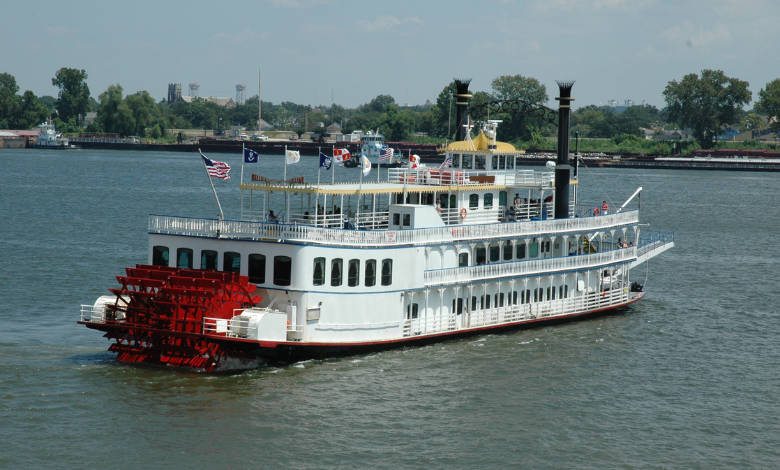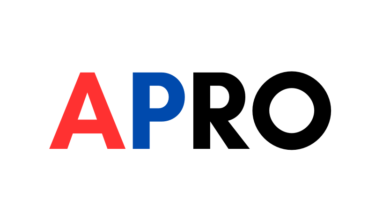The Montgomery Riverboat Brawl: Race, History, Viral Outrage, and What It Revealed

Sometimes a single event seems so chaotic, so charged, that it becomes a lens through which we can see deeper truths. The Montgomery riverboat brawl is one of those events. On August 5, 2023, what began as a routine docking conflict exploded into a multi-person fight at the riverfront in Montgomery, Alabama. But it became more than a fight. It reignited debates about race, history, justice—and how we see one another in America.
I remember when I first saw the video. I paused it, rewound, watched again. My heart pounded. Something about seeing that co-captain punched, people jumping off boats, someone swimming across to intervene—there was both horror and awe in that moment. It felt raw, unfiltered. And it left questions.
In this article, I want to walk you through how we got to that moment, what truly happened, who stepped in, what’s happened since, and why it matters. Because beyond the viral clips, this brawl speaks to deeper threads in American life—history, media, identity, solidarity, and the struggle to be seen.
2. Montgomery, Harriott II, and a Heavy History
If you look at a map of civil rights history, Montgomery is almost unavoidable. It was the site of the Montgomery Bus Boycott following Rosa Parks’ arrest in 1955. It’s part of the “cradle of the Confederacy.” In many ways, Montgomery embodies the shadow of America’s racial struggles. So when something violent, racialized, or symbolic happens in Montgomery, it carries more weight.
The riverfront district, with its parks, docks, and the Alabama River, is central to that past. The docks once served as sites where enslaved Africans were brought in, sold, or transported. The river was a conduit of commerce, oppression, exploitation. Those physical spaces are not blank backdrops—they carry memory.
The Harriott II is a riverboat cruise vessel in Montgomery. It offers dinner cruises, live music, and scenic rides along the river. On many nights, people board, enjoy food and entertainment, then return to dock at Riverfront Park. That’s routine. But in this case, routine collided with disruption.
The dock in question is one used by the Harriott II. It’s well known locally that the riverboat has a designated docking spot (though some reports say signage was not obvious or legally enforced). The docking point is crucial: if someone blocks it—or is slow to move—the riverboat crew may face difficulties. In this context, that logistical conflict became a flashpoint.
Read Also: Intrologen rotundus, Nut Grass, Purple Nutsedge, Coco Grass, Java Grass
3. How The Brawl Started: The Trigger
Here’s what we reliably know from police statements, video footage, and reporting: Shortly after 7:00 pm on August 5, 2023, the Harriott II, carrying roughly 227 passengers, attempted to return to its docking spot. But a privately owned pontoon boat was already moored in that spot, blocking the alignment of the exit ramp and preventing a clean dock.
The riverboat crew made repeated attempts—over about 40–45 minutes—to contact the boat’s occupants, asking them to move. They used the public address system, announcements, and verbal requests. The responses were reportedly dismissive—obscene gestures, refusal to budge. According to the co-captain, Dameion Pickett, he and a 16-year-old deckhand were taken from the boat to the dock to attempt to move the pontoon themselves.
Pickett claims he moved the pontoon three steps to the right to free the path. But that action drew confrontation from people on the private boat. That’s when the tensions escalated.
In video recordings, people argue. A man tells Pickett not to touch the boat. Moments later, a white man punches Pickett in the face. The fight quickly escalates as more people join in. At that point, it was no longer a simple docking dispute.
4. The Brawl Unfolds
Once the first blow fell, the situation spiraled rapidly. Multiple people, both white and Black, joined the fray. Some tried to break it up, others attacked more.
One striking moment: a 16-year-old deckhand, observing the violence, jumped off the Harriott II and swam to the dock to help. He dived into the water and reached the scene to try to intervene. That image of “swimming in” made headlines and became part of the narrative.
At another point, a folding chair enters the story. A Black man picked up a folding chair and struck several white attackers. The folding chair became a symbol in memes and reaction pieces. Some reports say people were thrown into the river. Others say women were struck or knocked down.
The melee lasted more than a minute. Amid the chaos, bystanders filmed the event from various angles, adding to the viral spread.
When the Harriott II docked and its crew disembarked, more confrontation ensued. The brawl didn’t end at the dock. The co-captain’s sister got involved. Some people were pushed into the water. Others were hit with chairs. It was chaotic. Police responded, arriving around 7:18 pm.
Through all this, the lines of race were stark: many saw white attackers targeting a Black co-captain. Many Black bystanders intervened. The spectacle felt like more than spontaneous violence—it felt like symbolic confrontation.
5. Key Players & Voices
When telling a story like this, names matter. Let me introduce some of the key individuals and voices involved — not just as shadows in video, but as people whose choices mattered.
Dameion Pickett — the co-captain of the Harriott II and a central figure. He says he was simply doing his job—moving a pontoon to allow docking. When he got attacked, he became a literal target. He was not charged initially, though later faced countercharges in some accounts.
White boaters / attackers — Among those charged are Richard Roberts, Allen Todd, Zachary Shipman, Mary Todd, and Reggie Ray. Each denies or pleads not guilty initially. Some have since pleaded guilty or reached agreements.
Bystanders, defenders, swimmers — The teenager who swam to help is often dubbed “Black Aquaman” in social media. Many others joined spontaneously to defend Pickett. There were older Black men using chairs, women trying to stop violence, people pushing attackers back. The image that someone took up a folding chair and struck attackers became a focal point online and in media commentary.
Public figures & official voices — Montgomery’s Mayor Steven Reed condemned the violence and called for accountability. The police chief, Darryl J. Albert, handled statements and maintained that there was insufficient evidence to classify it as a hate crime. Local media, civil rights commentators, and national outlets all weighed in, interpreting the fight through many lenses.
6. Race, Symbolism & Cultural Meaning
Because this fight took place in Montgomery, and involved a Black co-captain attacked by white men, race and symbolism could hardly be avoided. But how do we interpret what happened? Let’s unpack.
Why it’s seen as racial violence
To many, the brawl was not simply a docking dispute gone bad. It seemed like a Black man doing his job being attacked by white men, in a city with a fraught history of racial violence. That combination made the act feel less about a boat and more about power, status, and fear. Further, some video clips show racial slurs, gestures, and aggression that seem to exceed “just anger.” The optics alone spurred national conversation about whether this was a “race fight.”
Historical symbolism of riverfront & boats
The riverfront is not just a scenic place. In Montgomery’s history, rivers and docks were loci of the slave trade and economic control. The very act of a Black man being attacked at a dock, in a fight over intruding boaters, seemed laden with historical echo. Several writers pointed out the irony: a boat named Harriott (linked to past trade vessels), in the same place where enslaved people were once shipped into Montgomery. A later article even notes that the Harriott II echoes older slave ships in name and route.
Collective defense: “Black Aquaman” and solidarity
One of the most memorable images: a Black teenager diving from the riverboat and swimming toward the fight to help. He was dubbed “Black Aquaman.” That act—risky, bold, visual—became emblematic. For many, it represented defense, courage, and refusal to stand by while someone is assaulted. The crowd’s response—others stepping in, pushing back attackers—felt like collective defense, not just spectatorship. That communal reaction made the showdown more than personal.
Memes, art, music reactions
The brawl quickly became a cultural moment. Memes, hashtags, chants, rap songs, visuals—people responded. Gmac Cash made a song. Graphics of the folding chair, silhouettes of swimmers, slogans like “Let Freedom Swing” circulated. Some participants even threatened legal action over merchandising of the imagery. The event leapt from news to culture.
It’s important, though, not to reduce this to spectacle. The cultural reaction reflects deeper emotions: pride, anger, solidarity, identity, and a hunger for justice.
7. Legal Aftermath & Accountability
Once the dust settled, the legal system kicked in. But as with many events charged with symbolism, the legal path is messy.
Arrests & initial charges
Thirteen people were initially detained for questioning. But eventually, six people were charged in connection to the brawl. The main charges included misdemeanor assault, harassment, disorderly conduct.
Exactly who was charged? Among them were Richard Roberts, Allen Todd, Mary Todd, Zachary Shipman, Reggie Ray, and interestingly, Pickett faced counterclaims later.
Plea proceedings & sentences
Some charged individuals entered pleas of “not guilty” at first. However, later developments show that at least two white boaters pleaded guilty to misdemeanor charges (assault, harassment). For example, one man was ordered to serve 32 days (weekends), another to complete anger management classes and fines. Some others were sentenced to community service.
Pickett, at one point, faced a claim by Shipman, alleging that he had assaulted Shipman. But Pickett has maintained he was acting in his official capacity and is not a culprit.
Hate crime debate: legal vs symbolic
One of the most contested issues: Was this a hate crime? The local police, in consultation with federal authorities, concluded there was not enough evidence to elevate charges to hate crimes. That decision enraged some observers who believe the racial dimension should have warranted harsher charges. Politicians, civil rights advocates, and legal commentators have debated that distinction.
Merchandise & legal claims
A surprising twist: some involved parties began selling merchandise referencing the brawl. T-shirts, mugs, hoodies with slogans like “Let Freedom Swing” or images of someone swinging a folding chair. That led to threats of lawsuits over trademark or unauthorized use of likeness. The idea of profiting off violence that became a cultural moment added complexity to the legal aftermath.
8. Impact, Significance & Reflection
Beyond the courtroom, what lasting effects did this brawl produce? How should we interpret what it meant?
Viral video as catalyst
The brawl was caught on multiple devices from different angles. Videos circulated almost instantly on social media, memes followed, commentary exploded. The viral nature forced national attention. Some credit the presence of smartphones and real-time video for bringing immediacy and public pressure.
National conversation on modern racism
This wasn’t just local news. It became a symbol: a Black man attacked on a dock, defended by community, bringing racial violence from history into a present moment. It forced people to ask: Have things really changed? Are the same old patterns hiding beneath modern veneer? That conversation spilled into op-eds, podcasts, interviews, academic reflection.
Linking past to present
When the brawl happened, many commentators drew lines to Montgomery’s civil rights legacy: bus boycotts, segregation, lynching, Jim Crow. The riverfront itself carries the memory of the slave trade. So some see the fight not just as an isolated moment, but as a continuation of unresolved racial tension.
Community, resilience & hope
In the days after, Montgomery organized community walks, dialogues, memorials. People expressed that perhaps something shifted: that people had to see each other, confront history, talk. Some improvements at security and surveillance in riverfront areas were made. The brawl opened a door to deeper conversation—if people choose to walk through it.
Lessons & change
One lesson: conflict over mundane issues—like a dock space—can ignite deeper wounds. Another: video and public attention can push accountability. Also: communities matter—bystanders who intervene can shape outcomes. But the risk is that symbolism overshadows substance. We must ask: Did anything structural change? Did policies, policing, inclusion improve? That’s the ongoing question.
9. Critiques & Counterpoints
No story this volatile should be told without acknowledging critiques or alternate views. Let’s examine those.
It wasn’t legally a hate crime
Just because something feels racially motivated doesn’t mean it meets legal standards for a hate crime. The burden of proof is high. Authorities decided the evidence fell short. Some argue that if every racially charged act became a hate crime, the law loses specificity. That said, others believe the standards should evolve to reflect lived experience.
Media bias & sensational framing
Some critics say the way media framed the event amplified spectacle over nuance. Headlines emphasizing violence, “mob mentality,” or racial conflict might obscure underlying personal motives, alcohol, temper, or misunderstanding. Sensational imagery sells; but it may distort deeper truth.
Glorification of violence
While many defend the defenders, others worry that celebrating a fight—chairs, fists, chaos—can normalize confrontational violence. The danger: mythologizing the brawl as a “heroic incident,” when in fact violence is tragic, even when directed at injustice.
People are more than symbols
It’s easy to reduce individuals to metaphor: attacker, victim, defender. But each was a person with motives, histories, flaws. We should resist flattening them. The co-captain deserves empathy, the attackers deserve legal process, the bystanders deserve recognition—but also complexity.
10. Conclusion & Looking Forward
When I reflect on the Montgomery riverboat brawl, I think: this was more than a fight. It was a moment where history, race, power, and community collided in full view of the world. It forced us to watch. It made us uncomfortable. It gave us images to debate, symbols to argue over, and questions we can’t ignore.
We saw a Black man get attacked doing his job. We saw people swim to defend him. We saw chairs raised, mouths shouting, cameras rolling. But more than that, we saw a community demand visibility. We saw how even in chaos, people can step forward rather than stand by.
Still, we must ask: what next? It’s not enough to witness. We need structural change. Better dock rules, clearer enforcement. Education about racial history. Forums for community voices. Legal accountability when justified. More moments of repair than conflict.
My hope is that we don’t forget this. That the brawl becomes more than a viral moment—but a conversation starter, a teachable moment, a reminder that history lives in our streets and docks, and we choose whether to repeat it or reshape it.
11. FAQ
Q: What exactly is the Montgomery riverboat brawl?
A: On August 5, 2023, a large fight erupted at Montgomery’s riverfront dock after a private pontoon boat blocked the docking path of the Harriott II riverboat. Attempts to move the boat led to a physical confrontation involving multiple participants, captured on video and sparking national attention.
Q: Were charges filed?
A: Yes. Six people were charged in relation to the brawl (assault, harassment, disorderly conduct). Some have pleaded guilty, others not.
Q: Was it classified as a hate crime?
A: No. After review, law enforcement determined there was insufficient evidence to classify it as a hate crime.
Q: Who is “Black Aquaman”?
A: That nickname refers to the teenage deckhand who swam across the river to help his co-captain during the fight. His act became symbolic in social media and commentary.
Q: What has changed at Montgomery’s riverfront since?
A: There have been security improvements, expanded surveillance, public discussions, community events, and some policy review. But change is slow and depends on lasting commitment.



